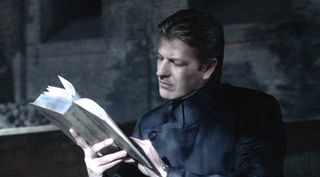

Video shot by rock’s “hottest couple since Sean and Madonna” (as Love wrote, presumably semi-jokingly) puts the Widow Cobain in a more sympathetic light than usual, though of course she may have withheld more strife-ridden footage. Even the previously unavailable notebook writings and homemovies bear few surprises, unless you count the news that Courtney and Kurt loved each other, loved their daughter, and were nonetheless pretty trying to be around for anyone else. (The grunge saga as a whole is barely alluded to Doug Pray’s 1996 docu “Hype!” remains its definitive screen chronicle.)īut if “Montage of Heck” has a flaw, it’s that Cobain’s regrettably brief life has been so persistently combed through already that the pic can offer little truly new insight. Devotees will miss other parts of the story absent or underplayed here. One factor that might have been dwelt on a bit more is Cobain’s chronic stomach pain, surely a major cause of his substance abuse and depression. It’s all absorbing stuff, amply conveying the magnetism of a conflicted leader who drew fanatical adoration, yet who one suspects wasn’t easy company (especially in tandem with Love). Jeff Danna’s imaginative new arrangements of Nirvana compositions range from faux lounge music to a children’s-choir “Teen Spirit” accompanied by a ghostly re-edit of the punk pep-rally video that took MTV by storm. A nightmarish manipulation of Kurt’s prolific drawing and painting imagery accompanies the searing “Scentless Apprentice.” Other tracks are illustrated by graphic-novel-style depictions of a cartoon Cobain’s creative process.

Though those previously unfamiliar with the subject may not be completely sold by songs heard here mostly in cacophonous live performance, several of the pic’s most arresting sequences are de facto musicvideos, many animated (by Stefan Nadelman and Hisko Hulsing). Alas, no: He shot himself to death at home the following year. A six-month layoff and Frances Bean’s birth, not to mention the release of 1993’s abrasively brilliant “In Utero,” made it appear that Cobain might yet come to terms with fame. His marriage to Hole frontwoman Courtney Love invited the wrong kind of attention - they were viewed as an unwashed Liz & Dick on heroin rather than booze - which turned even worse when a notorious Vanity Fair feature suggested both were still junkies during her pregnancy. The “spokesman for a generation” tag grated, reducing his personality and message to one of suicidally depressed nihilism. Jumping to major label Geffen for “Nevermind” in 1991, they made the so-called Seattle “grunge scene” - a much-resented label never spoken here - explode internationally with “Smells Like Teen Spirit,” a song and video that instantly rendered the entire hair-metal era absurdly dated.īut while Cobain loved writing and playing music, celebrity was an aspect of his unexpected success that he quickly grew to loathe.

The band began accruing a following after it moved to collegiate Olympia, then Seattle, releasing their first album, “Bleach,” on indie imprint Sub Pop in 1989. (After several early drummers came and went, permanent third member Dave Grohl joined in 1990.)Ĭobain’s dedication, ambition and talent were immediately evident. The misfit student found some salvation discovering punk rock (and pot), starting what became Nirvana with his friend Krist Novoselic while still in high school. But his parents’ divorce when he was 7 triggered a tailspin that made him increasingly unmanageable, a situation not helped by his being shuffled from one exasperated relative’s home to another. Firstborn Kurt was by all accounts an energetic, creative, unusually empathetic kid. Told as a chronological narrative via archival errata, recent interviews and some imaginatively repurposed elements, “Montage of Heck” (named after one of the playful audio collages Cobain made pre-fame) begins with recollections of a happy early childhood in small-town Aberdeen, Wash.


 0 kommentar(er)
0 kommentar(er)
